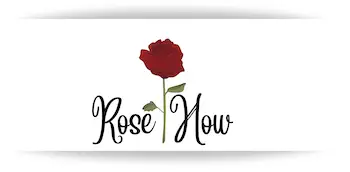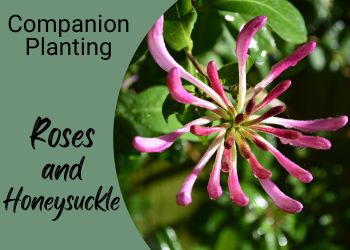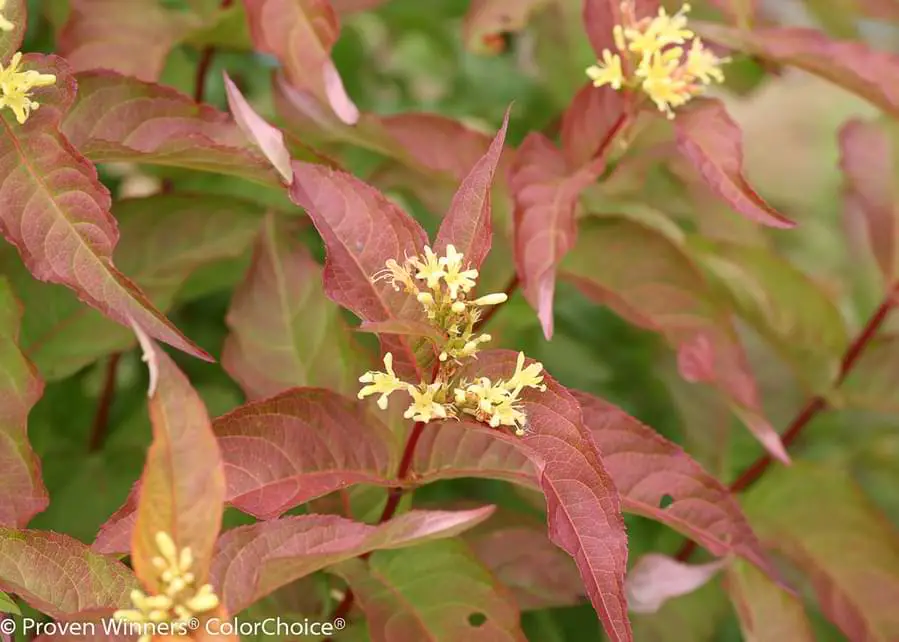Roses and honeysuckle are a classic pairing and make up the true midsummer magic in the fluorescence of the garden by combining their soulful scents. They also share some other characteristics.
In this post, I’ll be looking at roses and honeysuckle companion plants and understanding what rose and honeysuckle planted together can bring to your rose beds.
Here’s a quick overview, and then we’ll get into more details…
Roses and honeysuckle work well as planting companions. Both prefer 6 or more hours of direct sunlight and have similar pH soil needs and honeysuckle attracts pollinators. Height is the only consideration. Ideally, plant honeysuckle that has a maximum of 4 feet height and 4 feet spread.
Although we talk about honeysuckle and roses, this is not a post regarding the “bush honeysuckle”, which is an invasive plant in many areas. There are non-invasive honeysuckle varieties that can be planted and will work with roses.
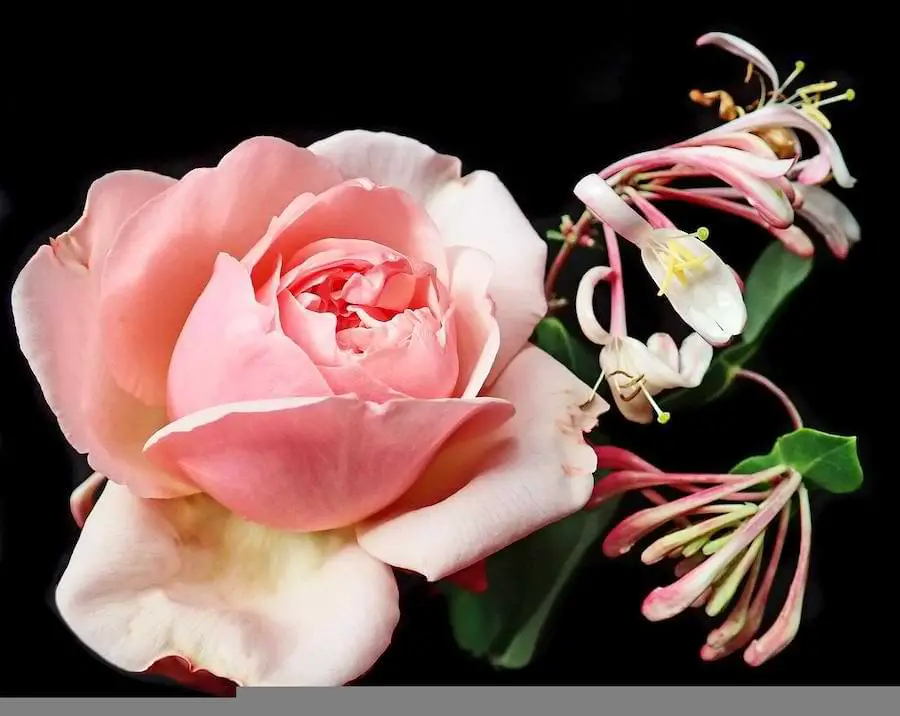
Roses and Honeysuckle – Companion Plants
Here’s a quick rundown on honeysuckle and roses companion planting.
| Rose | Honeysuckle | |
|---|---|---|
| Colors | Red, Pink, White, Yellow, Orange, Blue, Purple, plus color mixes | White, Cream, Yellow, Orange, Red, Lavender, Purple, and Maroon |
| Height and Spread | Dependant on variety. Generally 2 – 5 feet (Except climbers) | Ideal varieties should be up to 4 feet tall, and 4 feet wide. |
| Growing zones | Ideally 7 – 10 | 5 to 9 |
| Soil | Loamy, well-drained | Organically-rich sand |
| pH Value | 6.5 to 7.0 | 5.5 to 8.0 |
| Sun | 6+ hours of sun | 6+ hours of sun. Some like shade |
| Blooming period | Early spring to mid/late summer | Mid to late spring, till early fall. |
| Water Needs | 1 – 2 inches, every 3 – 4 days | 1 – 2 inches, every 3 – 4 days |
| Pollination, and Pests | Minimal pollinators. Attracts aphids | Attracts pollinators |
General colors available
Honeysuckles are known as a “garden’s pleasure.” They are deciduous but some are evergreen as well. And have a list of colors available. They range from white, cream, yellow, orange, red, and lavender, plus some darker shades like purple, and maroon.
Recent botanical advancements have also produced selective cultivars that are a mixture of different color hues.
Honeysuckle planted with roses can create a beautiful-looking couplet of color, grace, and scent.
Sun and shade
Roses and honeysuckles share the same shade and sun conditions. Both roses and honeysuckles love the full sun for 6+ hours daily and may tolerate partial shade for some time if the daily requirement of 6 hours is met.
But not all honeysuckle varieties like full sun.
Mountain honeysuckle is native honeysuckle in the more northern areas of North America. It prefers a cooler climate and benefits most from a partial, or dappled shade area.
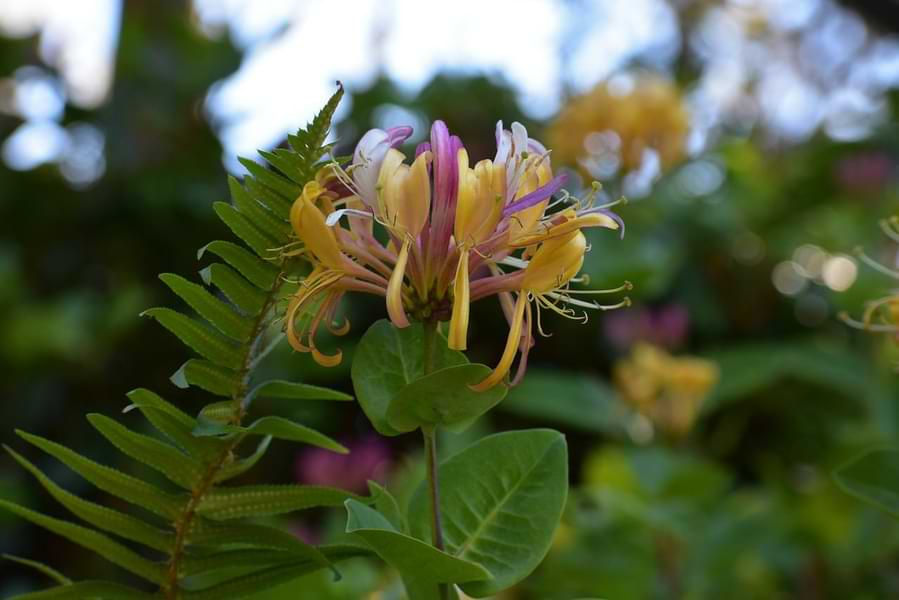
Soil
Similar to roses, honeysuckles also love well-drained soil and dislike water-logged roots. Their preferred pH value is broad, lying between 5.5 and 8.0, which encompasses the ideal pH levels for all roses which are generally 6.5 to 7.0.
Honeysuckle performs best in slightly acid to neutral medium and the best blooms are in organically-rich sand. Roses prefer loamy soil that isn’t too sandy, so you may need to spread these two apart in order to prepare different soil mixes for each.
Watering
Roses like around 1 inch of water every few days, more so in hot weather. They also prefer the soil to be kept moist, but not saturated.
Ensure your honeysuckle is watered once or twice per week with at least 1 inch or more of water. Increase this during hot summer months. Most honeysuckle will grow in an optimum moist soil environment. Established honeysuckle can get by on less water.
Find out more in my article on when to water roses.
Blooming period
Most varieties of honeysuckle bloom in mid to late spring. Some will continue to bloom through summer and into the early fall.
This matches the blooming of roses well. It should provide some nice blooming layers when your roses come out to join your honeysuckle once or twice a year.
Growing zone
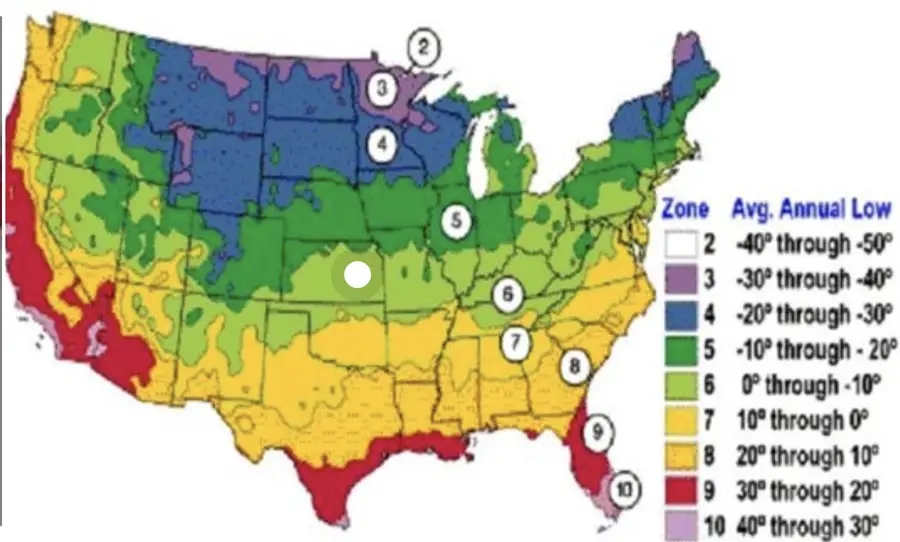
There are almost 180 species of honeysuckles, so their hardiness zones are also versatile. However, they are known as heat-tolerant plants and can survive the lower extremes of USDA hardiness zones (up to zone 9)
Quite similar to roses, honeysuckle can be grown easily in USDA zone 5 to 9. Some exceptions may be found in upper zones. But out of 180 species, almost 80% of the honeysuckle species can be grown easily in the same growing zones as roses, which is ideally 7 to 9.
So there’s a fair chance of mutual growth by growing honeysuckle with roses in the same area.
Height and spread
The height and spread of any mature plant are important for companion planting for roses and honeysuckle.
Honeysuckles range from miniatures of 2 feet to the giants of literally 30 feet or more in height and spread. Of course, this amount of height and width are not suitable to be paired with garden roses that generally reach 2-5 feet with full bloom for many varieties.
Climbing roses and honeysuckle

Honeysuckle varieties generally do not suit climbing or rambling roses that well. It is, of course, possible, but they can become “messy” in appearance.
Also, the mass of honeysuckle vines will make pruning roses and managing them, in general, more difficult.
This is why picking the right honeysuckle as a rose companion is very important. However, honeysuckles of 30 feet in height take at least 10 years to reach this length.
Attracting pollinators
Honeysuckles are excellent nectar-producing plants that attract all the usual kinds of good pollinators.
You’ll find a large number of bees and butterflies that will frequent your honeysuckle. This, in turn, encourages the pollination of roses as well, especially as roses can struggle to attract bees.
Also, the honeysuckle’s strong scent also attracts hummingbirds which are a source of pollination too.
But one thing that needs to be noted is that a lot of honeysuckle species have
poisonous nectar and flower buds, so choosing the right plant is very important.
Which honeysuckle to plant with roses
Some common species and subspecies of honeysuckle can be paired with roses.
If you’re looking for a variety of honeysuckle that works well with roses and matches all the sun and other requirements that roses like, then consider the Kodiak Orange Diervilla. It isn’t invasive and grows to 4 feet high and 4 feet wide.
It makes for good honeysuckle with roses companion plant.
Roses and honeysuckle ~ More roses help 🌹
I hope this has helped you decide whether to plant roses and honeysuckle together as companion plants. They are relatively easy to grow together, and will both complement your garden with wonderful blooms. Just be sure not to get the invasive species type of honeysuckle.
Aside from honeysuckle and roses, be sure to check out my other articles, and visit my recommended tools and resources page for more rose-growing help.

Hi, I’m Michael. My passion for roses was sparked a few years ago after visiting a dedicated community rose garden. So Rosehow.com represents my take, my learnings, and my help for anyone looking to grow, be proud of, and harvest roses.
